Review for Nabari no Ou: Complete Series - Part 2
Introduction
I certainly didn't approach Nabari no Ou in the right frame of mind when the first half was released. An overabundance of Naruto can inure one to the idea of more ninja stories. A rather bland and unpromising opening gave way to some really interesting character development, and more importantly, a very involving story. But now that the concluding half of the series has arrived for review, I find that I've quite forgotten what's going on and who's who. That doesn't exactly bode well for this review.
Nabari no Ou is a ninja story set in the modern day, with its confrontations taking place in the context of modern cities, modern technology and a very recognisable society. Nabari no Ou's protagonist, Miharu Rokujo is just a regular high school kid, living with a normal family, going to a normal school, or so he thinks. He gets dragged into the murky world of ninja against his will. His sole ambition in life is to remain as uninvolved as possible. You may think that teen apathy is a common trait, but this kid takes it to an extreme level. He also has a wicked ability to twist people around his finger, inflicting them with extreme guilt trips, but the one thing that stands out is his ability to disappear, to just fade out of a conversation. One minute he's there, the next he's left the building before you even realise. It's odd that such an apathetic soul would attract any interest, but his classmate Koichi Aizawa insists on drafting him into the school's ninja club, which at the time consists of him, and teacher Tobari Durandal Kumohira.
But the ninja club isn't just an otaku conceit; it's for real. For Miharu lives in a world where ninja are real, have existed in secret since the Feudal era, and even now, in modern Japan compete for supremacy amongst themselves. Your teacher might be a ninja, your doctor, or even your parliamentary representative. For while everyone lives in the real world, for the ninja there is also the Nabari world, the shadowy world where their battles continue, with none of the normal people any the wiser. It turns out that Miharu Rokujo is a key player in this world, even though he doesn't know it. The ultimate in ninja arts, the forbidden Shinrabansho technique is embodied in certain individuals, they are born with the knowledge hidden within them, and when they die, the secret is reborn in someone else. And everyone would kill to possess this knowledge. Which means that everyone would kill to possess Miharu. Tobari and Koichi want him to join the Banten ninja club so that they can protect him, but what can two ninja do against the powerful Kairoshu group, descendants of the Iga, who have decided to make use of the Shinrabansho, rather than keep it hidden, as has been previously the case? But the thing is, that if Miharu can do what no other has managed, if he can learn how to use the Shinrabansho hidden within him, then he would become the King of Nabari, and he will have the power to literally reshape the world. If he could only be bothered…
Previously, it turned out that the world of the ninja is a lot more complicated that just simple good guys and bad guys, and when Miharu met a Kairoshu assassin named Yoite, he finally found someone that he actually had something in common with. Add to that his disillusionment with Tobari's methods of keeping him safe, and the shock came when Miharu actually switched sides to the Kairoshu. As the first half of the story concluded, the ninja of the Koga had invited the Banten, Kairoshu and the Fuma to discuss the fate of the Shinrabansho, and what should be done about the secret texts that they possess. But when they arrived at the Alya Academy school that hides the Koga, they found themselves in the middle of a coup, as factions within the Koga chose that moment to decide who succeeds their current, terminally ill leader.
The concluding thirteen episodes of Nabari no Ou are presented across two discs from Manga Entertainment.
Disc 1
14. The Depths of Night
15. A Morning of Partings
16. Visitor From Afar
17. Moment of Collapse
18. A Voice Calling Out
19. Profile of an Angel of Death
20. To Togakushi
Disc 2
21. Ambitions
22. Chaos
23. Activation
24. Engetsurin
25. Two
26. Heart to Heart
Picture
Nabari no Ou's 1.78:1 anamorphic transfer is unfortunately an NTSC-PAL conversion. Most of the anime being released in the UK now come via Australia, who have for the past twelve months or so been creating native PAL conversions for their anime. I guess that marks this as an older title. You do then get a hint of ghosting and judder, the occasional blended frame. That isn't as apparent in Nabari no Ou as it would be in other anime, as the look of the show is very bright, almost overexposed, with the colours fading to pastels. The animation is pretty standard, lacking in the energy and dynamism of a higher budget production, while the character designs are generic enough to be non descript. Nabari no Ou is one of those 'does what it says on the tin' anime.
Sound
You have the usual options of a DD 5.1 English track, a DD 2.0 Japanese track, with translated English subtitles or signs only. I opted for the original language track as always and found it to be pretty much par for the course for anime of this genre. The stereo does enough to bring across the action, while the music is initially off-putting with its sitcom style, but gradually grows to suit the show well. The 5.1 English audio is something I just sampled, and found little to distinguish it from any other Funimation dub. I was initially a little disappointed, given the nature of the Tobari character's back-story, that he didn't get an Irish accent, just another neutral American one, but since then I have seen Black Butler, and now find that sufficient cause to be grateful. The subtitles are clear, legible, and free of error.
Except that the subtitles were absent altogether for the preview of episode 17, and on the second disc of the set especially, they were overscan unfriendly, letters and punctuation on long captions vanishing off the edge of my CRT television screen.
Extras
The discs' presentation is the usual static menus and jacket pictures for those whose players will display them.
The extras are all on disc 2, beginning with the textless credits. The commentary on this collection accompanies episode 25, with the voice of Miharu (Brina Palencia), and the voice of Yoite (Joel McDonald). It's the usual offering from a Funimation commentary, more of a light-hearted gossip than anything particularly insightful about the show. It certainly isn't scene specific.
Conclusion
It's anime, animation, bright vivid colours, the explosion of imagination on screen, a fast paced, visual frenzy that delivers a pure hit of narrative direct to the optic nerves. How could an anime ever be dull? Nabari no Ou is dull, it's turgid, tiresome and unfulfilling. It's utterly mediocre, middle of the road, average. I'm beginning to sound like Johnny Five from Short Circuit, as I rapidly exhaust my mental thesaurus of the ordinary. Nabari no Ou makes it hard to find the effort to actually form an opinion about it. For thirteen episodes, I let its lukewarm beigeness wash over me, as I remained ephemerally aware of its story and characters, and after some five hours worth of half aware existence in its presence, I can enthusiastically pronounce that it's, well, okay, kind of.
It was, kind of, vaguely promising at the end of the first half of the series. Nabari no Ou took a devil of a time to actually get going, with a whole lot of poorly balanced comedy and drama, and tiresome character clichés to get through before it really started to develop the story, and add some meat to the characters. Its tales of ninja confrontations and battles happening in the background of the real world slowly began to grow on me, and with some interesting, and unexpected twists and turns along the way, I really found that I had a desire to see how the story would conclude.
From early on in this set, it became clear that the creators had shot their bolt in the build up to the half way point, as the second half just doesn't live up to that brief glimmer of promise that had so enticed me before. That slow build, the slow pace continues all the way to the conclusion; there's no energy or impetus to the story, never a moment that grabbed me by the throat and glued my attention to the screen. This was a story that unfolded in the background, almost subliminally, despite the fact that I was watching the Japanese version and had to be glued to the screen for the subtitles.
The eventual character development that initially enthused me turned out to be a misnomer. Nabari no Ou's 'trick' is to show that almost every character other than the main cast turns out to be the exact opposite of who you think. The fiendish plot twist isn't there to shock you out of your complacency, it's this show's ground state, feeding you plot twist after plot twist until it all becomes part of the dull normality. Worst of all, there is very little character interaction. What the cast does is hardly affected by how they interact with each other. They all have their separate agendas and pursue them to the conclusion. The interesting development at the end of the previous volume was that former enemies Miharu and Yoite found common ground, even developed an affection for each other, with Miharu promising to use the Shinrabansho to grant Yoite's wish. In this volume, the cast fall onto either side of that wish, with those wishing to help Miharu and Yoite, and those wishing to stop them. And that's it, that's the sole character dynamic that defines what happens to everyone in this story. It's a very thin hope upon which to hang a tale. It all depends on whether you have an empathy for, can get behind Yoite and Miharu. Yoite's defining characteristic is that he's damaged goods, Miharu's is that he is a brat. I couldn't care less what happened to them.
The interesting character dynamic was when Miharu was at the centre of the Banten quartet, being defended by Tobari, Aizawa and Raimei. It was a fractious group, with differing priorities and personalities, but it made for interesting viewing. The twist came when Miharu defected to the Kairoshu, and I had hoped to see how the group would deal with that. In this volume we learn they dealt with it by falling apart. Tobari spends much of the time in this volume, sulking in the woods, while Raimei and Aizawa do some… stuff. I'm not sure what it was, because quite frankly it didn't seem that interesting. Instead we have 13 episodes of "I'll keep my promise, Yoite" from Miharu, and "You keep your promise, Miharu" from Yoite.
The conclusion of the show is an exercise in futility. Whatever the characters want, or rather, more importantly, whatever you may have been led to expect from the way this story is built up, you will be denied. Nobody here gets what they want, certainly not the characters, and least of all the audience. Nabari no Ou is a damp squib of an anime. It does what it sets out to do, it develops its characters and tells its story, and it does it competently enough, with adequate animation and heartfelt voice actor performances. It just forgets to make any of it interesting.

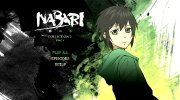
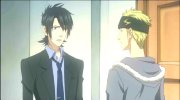
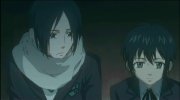
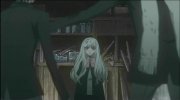
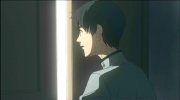
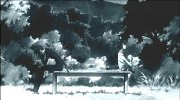
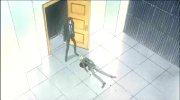
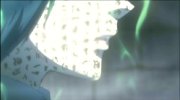
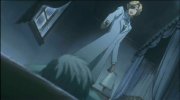
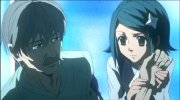
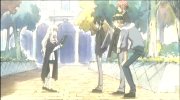
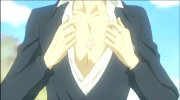
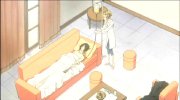

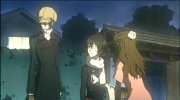
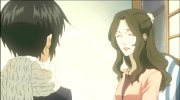
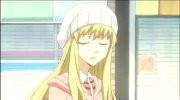
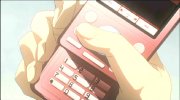
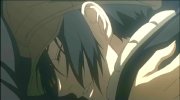
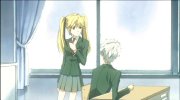
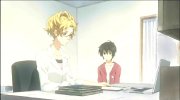
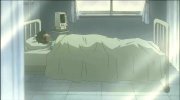
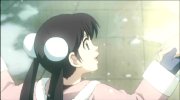
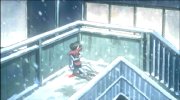
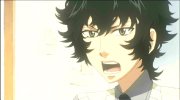
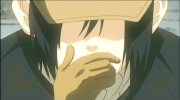

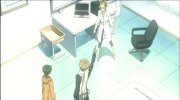
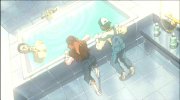
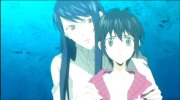








































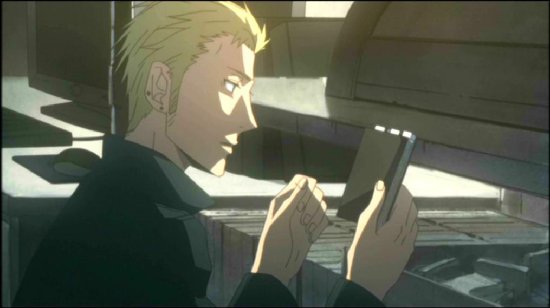


Your Opinions and Comments
Be the first to post a comment!